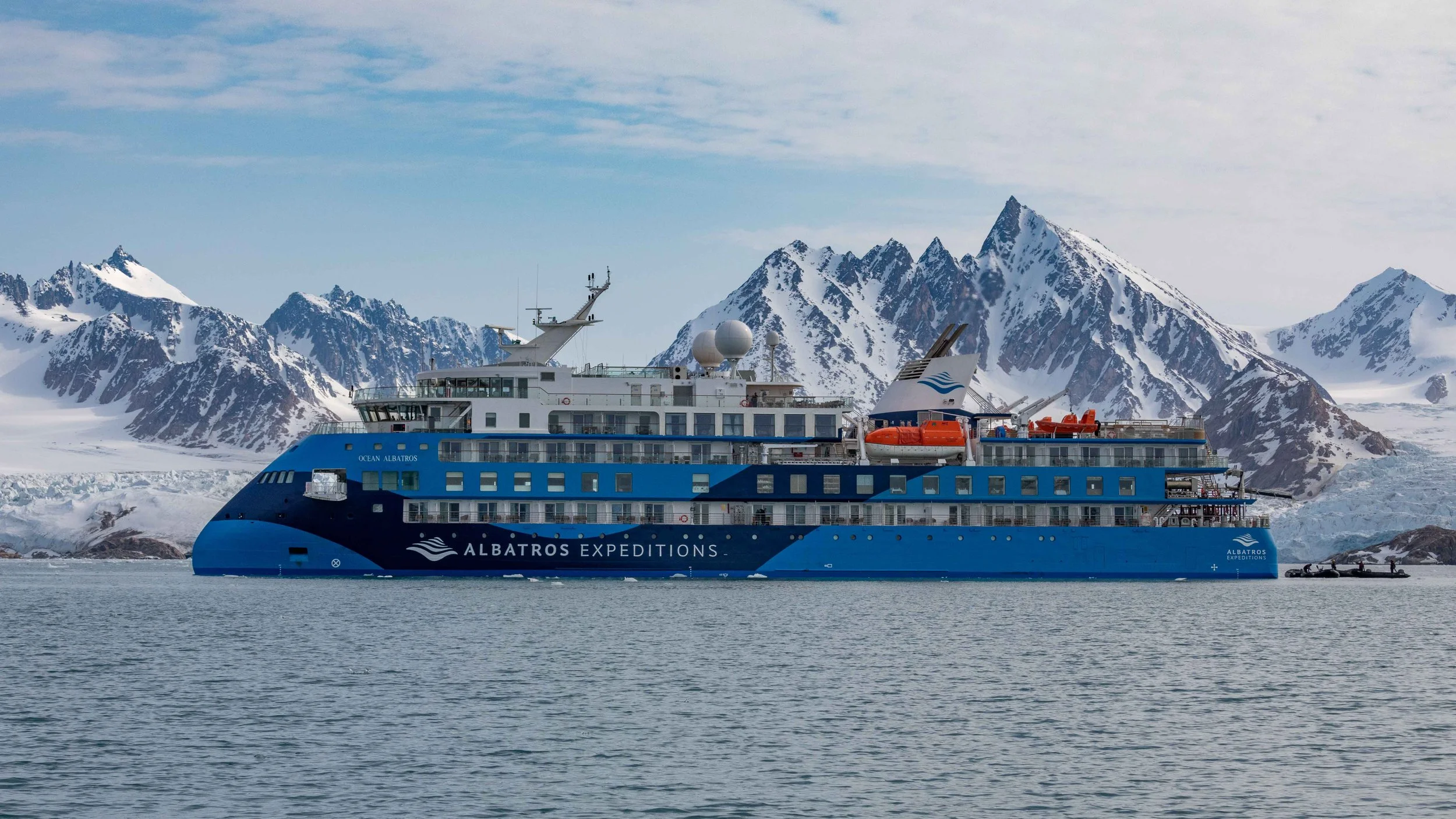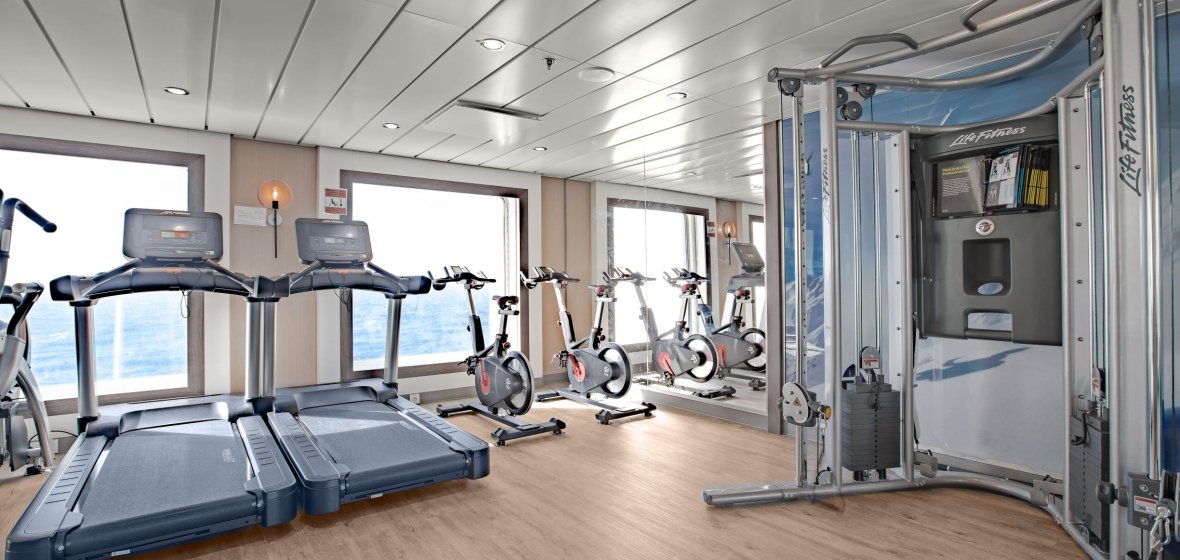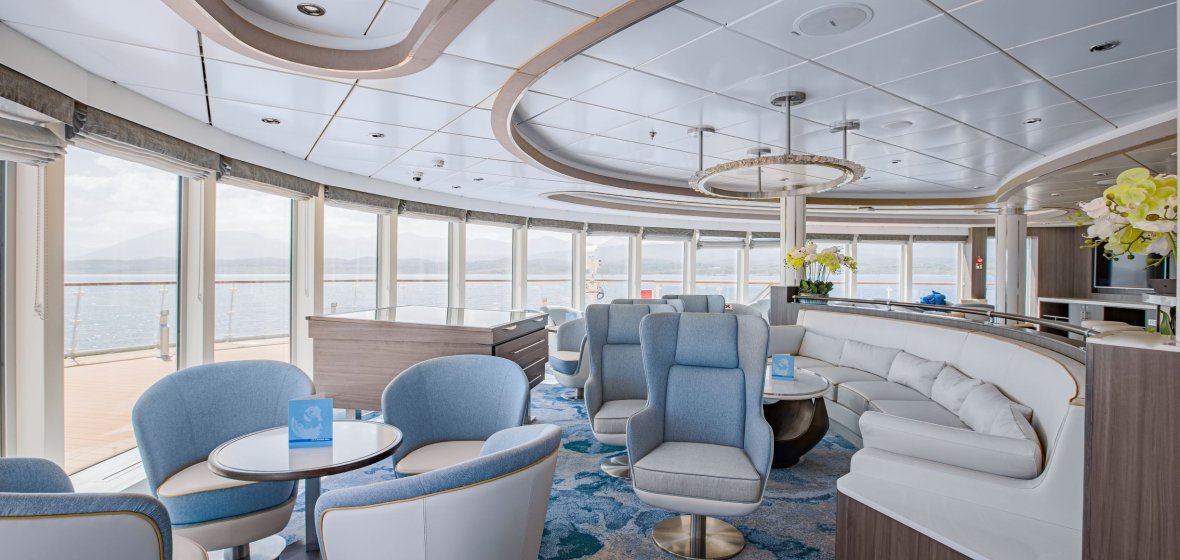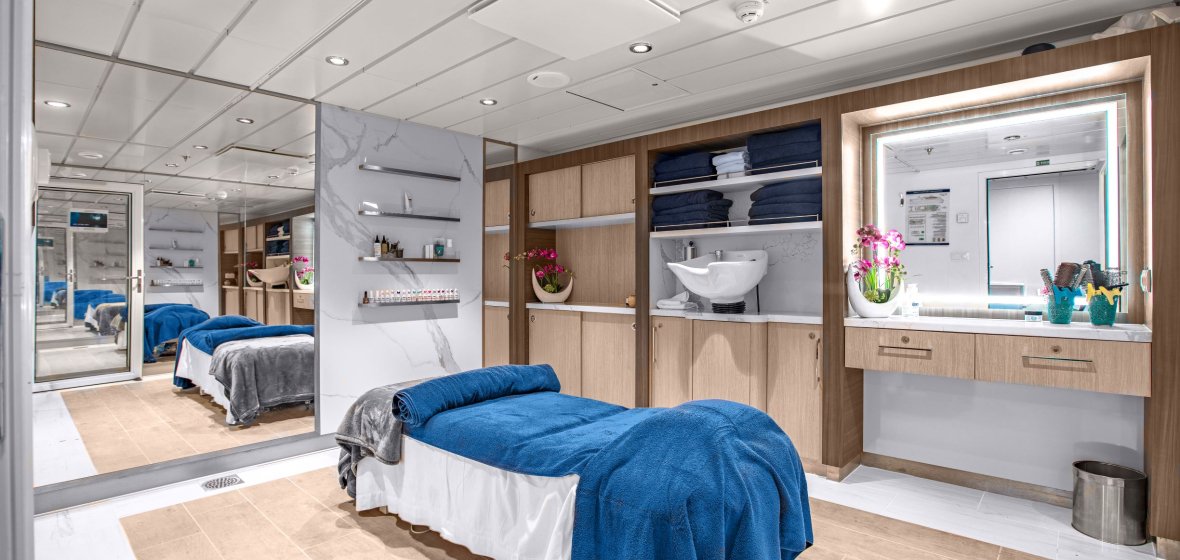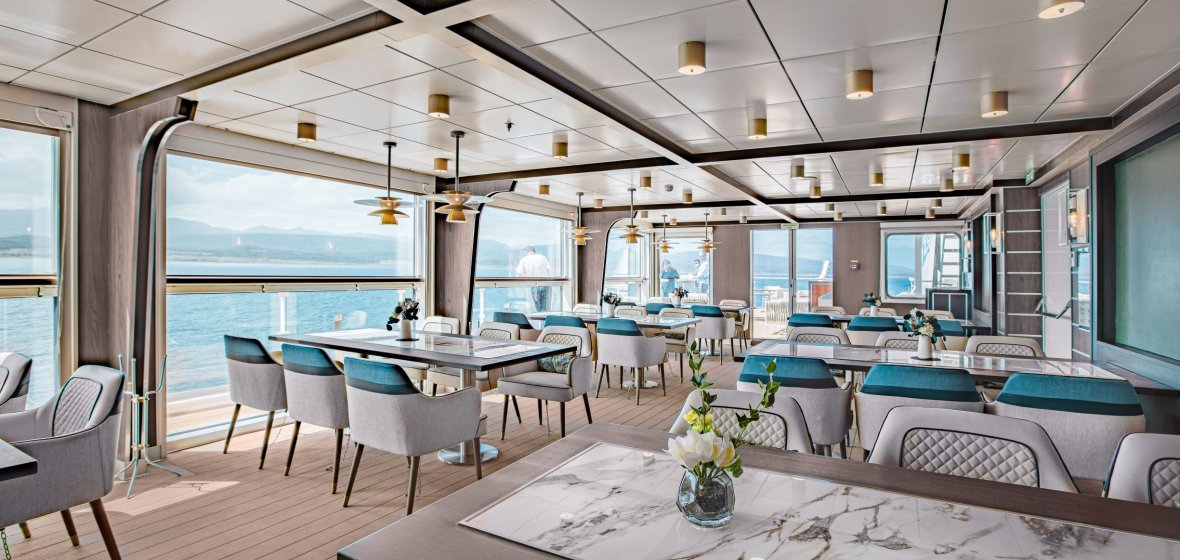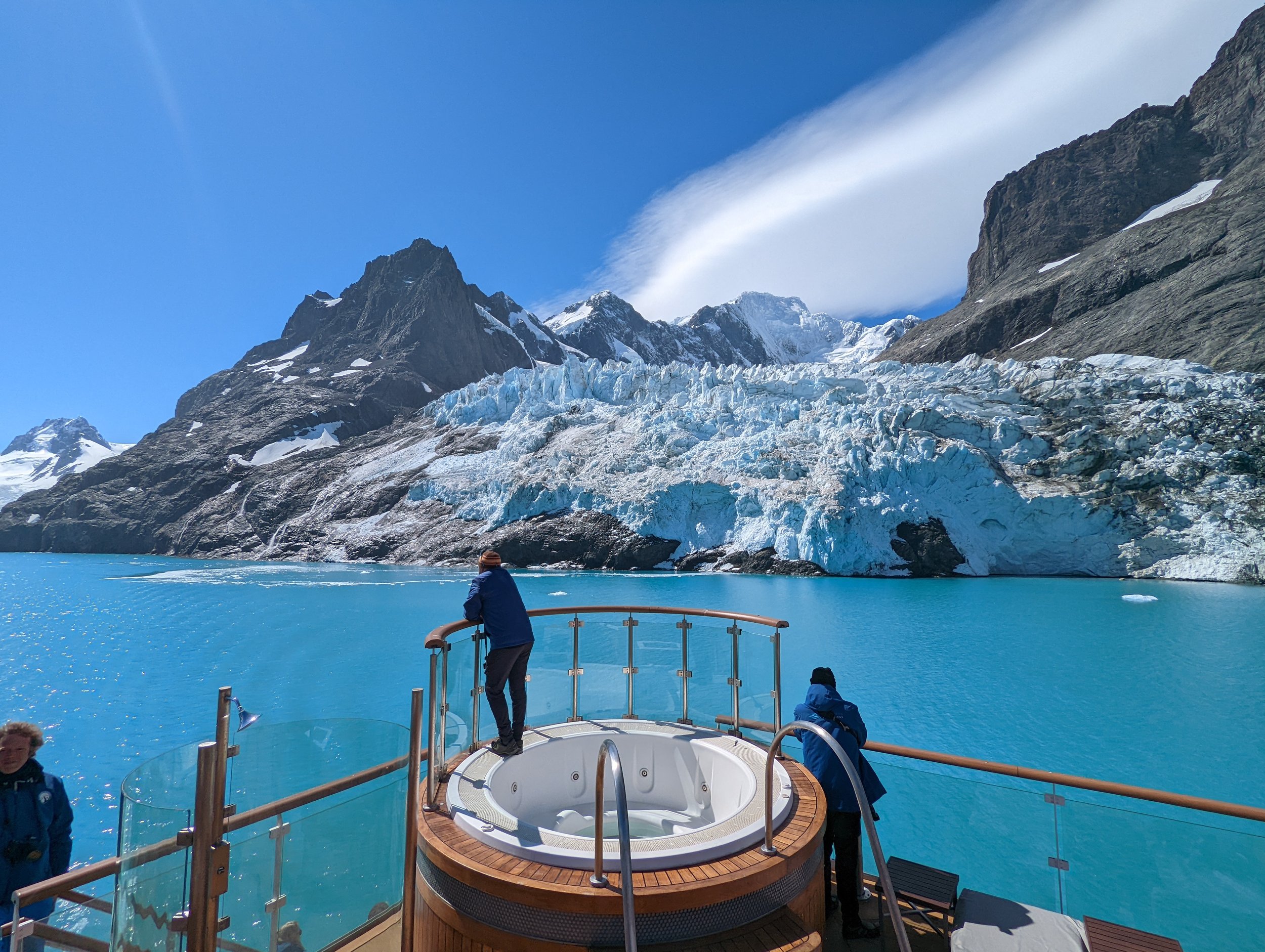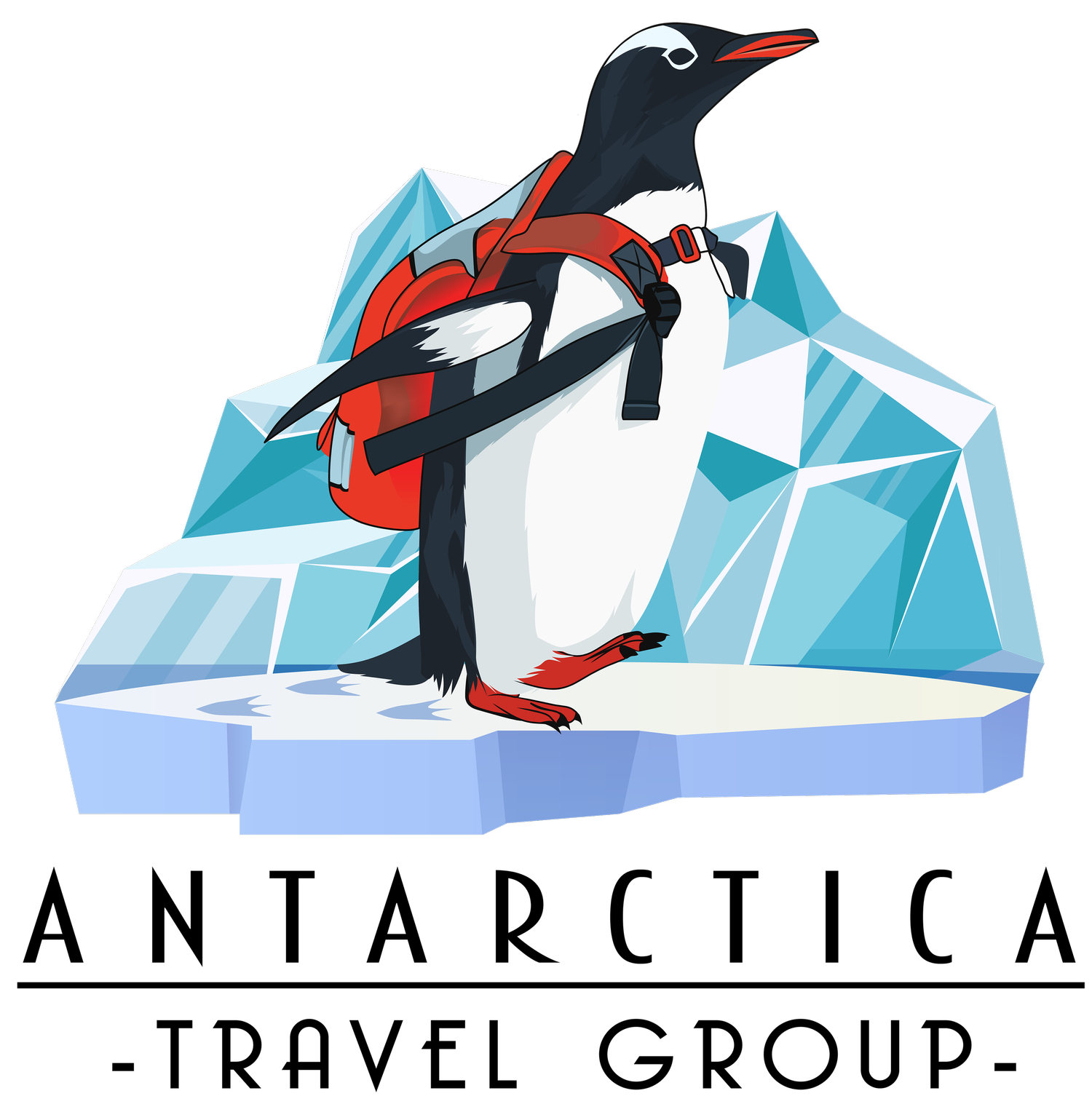
SVALBARD IN DEPTH - LAND, SEA AND ICE
Eleven days aboard Ocean Albatros, with Albatros Expeditions
Duration: 11 Days / 10 Nights
Itinerary: Svalbard in Depth - Land, Sea and Ice
Departing/Returning: Longyearbyen / Longyearbyen
Passengers: 176*
Ship name: Ocean Albatros
Departures: Jun 16th - June 26th, 2024
Dates and Details.
Experience the wild raw beauty of Arctic nature on this in-depth voyage around Svalbard. A combination of our two Polar Bear Express voyages, this in depth itinerary will explore two distinct regions of Svalbard - beginning in the the green plains and desert hills of South Eastern Svalbard, before sailing via Longyearbyen towards the far Northwest of Svalbard and exploring the icy wilderness of the Arctic Ocean. With a unique combination of environments, locations and wildlife, this rare combination voyage offers a more in depth experience on Svalbard than any other Albatros Expeditions voyage.
Join a new and exciting voyage onboard Ocean Albatros, exploring Svalbard in depth. This expedition departs from Longyearbyen, the world's northernmost town, before heading towards the deep fjords and rolling mountains of Southern Svalbard. Experience the raw beauty of nature in this high Arctic paradise, which is kept warmer than other lands at the same latitude by the last gasp of the Gulf Stream. This region includes some of Svalbard's most spectacular scenery and greatest biodiversity with a variety of habitats, from green tundra meadows, to glassy fjords and precipitous mountains. Spot the endemic Svalbard reindeer, puffins and maybe even the elusive yet charismatic Arctic fox in this chilly utopia.
Trip Description.
-
DAY 1 - LONGYEARBYEN, SVALBARD - EMBARKATION
Board your flight in Norway and arrive in Longyearbyen, Svalbard - the world's northernmost... everything! This remarkable little city is not only the northernmost town in the world (if one excludes the tiny research community of Ny-Ålesund, slightly further north on Svalbard), but also hosts the world's northernmost civilian airport, schools, bank and supermarket. The town's rugged frontier edge belies a core of warm Nordic hospitality and coziness - hyggligt, as we say in Denmark!
Immediately after landing in Longyearbyen, you find yourself in a different world. The chilly Arctic breeze can be felt as soon as you step onto the tarmac, and the famous signpost outside the terminal reminds visitors how far north they really are; as well as to keep watch for bears! The snow-capped mountain Hjorthfjellet looms over the airport on the far side of Adventfjorden, and off in the distance can be seen the saw-toothed peaks and languid glaciers of northern Spitzbergen.
After arrival, you will board the awaiting Ocean Albatros. After our mandatory safety briefing and lifeboat drill, head onto the outer decks to enjoy a glass of champagne while watching your expedition vessel leave civilisation behind... And set a course for adventure!
DAYS 2-5 - SOUTH AND EAST SVALBARD
During the night, your expedition vessel will reposition away from the last vestiges of civilisation on Svalbard, and head into the wilderless of this storied land. Roughly triangular, the southern half of Svalbard comprised the lower half of the island of Spitsbergen, the island of Edgeøya, and countless fjords, islets and skerries, all of which beckon exploration.
At a first glance, this region may seem barren and lifeless. But look closer and the exact opposite it true - saxifrages, Svalbard poppies and other tundra plants defy the brutal weather, their jewel-like flowers reaching for the weak Arctic sunlight. Tiny calico snow buntings flit between crags, while perfectly camouflaged purple sandpipers scamper along the shore. Look higher up on the vegetated slopes, and there - greyish white 'boulders' move and resolve themselves into sheep-sized reindeer: the unique subspecies native to Svalbard. A flash of bluish-black, and the screeches of nearby birds herald the arrival of the Arctic fox, the only native land predator on Svalbard (the polar bear being classified as a marine mammal).
Life on Svalbard relies on the sea - even the few land mammals such as the reindeer and Arctic foxes rely on the moisture brought by the frigid Arctic waters, and it is in the marine environment where Svalbard's biodiversity is richest. Walrus haul their vast bodies onto flat beaches to rest, where they snuggle together for warmth and protection. Belugas frolic in vast pods in the waters off the coast, harvesting fish and crustaceans from the seabed, and further offshore the vast gentle baleen whales feast upon copepods and small fish.
Southern Svalbard is arguably the first part of the island to be exploited by humans. On Edgeøya, vast piles of snow-bleached bones bear witness to the systematic and industrial-scale slaughter of walrus an beluga in their thousands. The earliest humans on the islands (mainly English and Dutch whalers and Russian Pomor trappers) had little regard for conservation, seeking only profit, a situation which continued well into the 19th century. Thankfully all wildlife on Svalbard is now protected by law, and vast tracts of the archipelago are designated as nature reserves and National Parks - some of the largest and richest in the world!
The exact landing sites we will visit in the south of Svalbard will be determined by wind, sea and ice conditions, which can wildly vary day to day and year to year; this far north, all human activity is subject to the whims of Mother Nature. Possibilities to explore on south Spitzbergen include the fjord systems of Bellsund and Hornsund, where birds cluster together on high cliffs and reindeer graze on the fertile slopes below while icebergs drift by from the various large glaciers in the area. Further east on Edgeøya, sites include the walrus colonies of Andréetangen and Kapp Lee, and the spectacular raised shorelines and bird colonies of Sundneset.
DAY 6 - LONGYEARBYEN - WE EXPLORE A COAL MINE AND DELVE INTO THE HISTORY OF THIS FAR NORTH TOWN
Pylons that once carried buckets of coal, and an increase in the number of huts along the shoreline herald Ocean Albatros' return to the town of Longyearbyen. Around two thousand hardy souls call this unique settlement home, and many are fiercely devoted to their high Arctic home. It is very easy to see why!
Longyearbyen occupies a small valley at the head of Adventfjorden - a small inlet off Isfjorden (the vast fjord which bisects the island of Spitzbergen). The town was originally established as a mining settlement in the late 1800s, and is named after John Longyear - an American prospector whose company began exploiting the black gold beneath the city in 1906.
One small mine produces coal which is used to provide electricity for the town - changing market conditions and safety concerns meant that mining has now almost ceased in Longyearbyen. The mining heritage of the town remains strong however, and several unique traditions developed from this history - removing one's shoes is customary upon entering many shops and cafes in the town for example, and mining ruins can be observed throughout the surrounding hills. Longyearbyen has since reinvented itself as a hub for high Arctic tourism and research, with several hotels and the University Centre in Svalbard established. The modern airport was opened in 1975, allowing year-round access for this formerly isolated community.
After our breakfast on the ship we set off to learn more about Longyearbyen's exciting mining history as we enter now inactive Mine number 3. As we walk through the defunct mine, we can get a closer look at some of the machinery and equipment left behind as production stopped. Certain techniques apply to mines that are this high into the mountains, which we will be introduced to by our guides. We end our tour in the main tunnel that was excavated back in the 1970's. Nb. dress warm for the trip, as the mine is quite cold. Helmets and headlamps are handed out.
Back on our ship we will follow up on our experiences and after lunch it is time to explore the city further.
Longyearbyen has several unique laws as a result of it's high Arctic environment. Due to the delicate environment of the islands, nobody is permitted to own a cat for example, as a family pet could still decimate local bird populations. Anyone leaving the boundary of the town is required by law to carry a firearm to protect themselves from polar bears. Despite the challenging environment of the town, it is a bustling thriving community which offers excellent amenities to visitors. Visit the peerless Svalbard Museum and see relics of the whaling era, perfectly preserved in the frigid permafrost, alongside exhibits on the natural history of this remarkable archipelago. Shop for memories in the many excellent boutiques of the town, selling locally produced souvenirs, artworks and homewares, or simply relax on a sunny cafe terrace and watch this remarkable little town in action.
DAY 7 - NORTHWEST SVALBARD - THE WILDERNESS OF THE HIGH ARCTIC
One of the largest protected wilderness areas in Europe, North West Svalbard was declared a national park in 1973. The area is famed for its history, which documents some of the earliest human arrivals on Svalbard. While Norse explorers may have sighted these icy shores during the Viking Age, the first definite arrival was the expedition of William Barents, the legendary Dutch explorer for whom the Barents Sea is named. While now protected from human distruption, when Barents arrived in 1596, he noted the vast numbers of whales and seals which were soon prey to English and Dutch whalers, who arrived within a decade of Barents to pillage the area's wildlife. The area occupied the triple point between land, sea and ice, and as such was the perfect location from which to harvest the gentle giants of the oceans. Sites used to dismember whale carcasses and render them for their precious oil include the Dutch settlement of Smeerenburg, where the remains of 16th Century blubber ovens and building foundations can still be seen. Other sites such as nearby Ytre Norskøya record the darker side of this industrialised slaughter, where hundreds of young men who hoped to make their fortunes are buried thousands of miles from home.
Today, all that remains from this period of history are bones and the scant remnants of human habitation. Slowly reclaimed by creeping Arctic nature, the region is now a anture lovers paradise. Tiny Arctic poppies and purple saxifrage defy the brutal conditions to flower in the brief summer, while geese, eider ducks and other seabirds return to the island to raise their young. Walrus can be found hauled out on beaches, and we must always be on careful lookout for wandering polar bears in this now again wild region.
DAYS 8-9 - INTO THE PACK ICE
An icy breeze touches your exposed cheeks. The scent of snow and sea fills your nostrils. Sunlight reflects off the floating ice, illuminating the clouds overhead. Enter an environment like no other, the vast shape-shifting realm of floating ice which crowns our planet. The vast ever-changing ice pack to the north of Svalbard stretches from this already isolated archipelago to the North Pole, and onwards across the Arctic Ocean towards the northern shores of Chukotka and Alaska.
The Arctic ice pack is one of Earth's largest habitats, although unlike most it varies hugely year on year, expanding in winter and retreating in summer. The location of the sea ice around Svalbard can also vary wildly - however, with two full days planned to explore this icy wilderness, we maximise our chances of finding and exploring this impossibly remote environment. At first glance, this stark white wilderness seems barren, empty and lifeless. This icy wilderness holds on to its mysteries, and of course wildlife sightings are at the whims of Mother NatureWith a little perseverance however, the ice reveals its secrets.
As Ocean Albatros pushes through the narrow channels in the ice, tiny cod-like fish can be seen silhouetted against the ice in the clear water. Kittiwakes and Gloucous Gulls follow the vessel as it distrubs the water. Further out on the ice, black dots appear; moving closer, they resolve into seals, basking on the ice. A plume of water reflects the sunshine - a pod of belugas perhaps, or maybe even the vast gentle bowhead whale crushing this ice from below as its massive body surfaces. There, beyond the banks of rucked ice - a yellowish dot pads along the ice, the head swinging from side to side: the King of the Arctic continues his never-ending quest for prey. This is the kingdom of the polar bear, the vast icy wastes at the top of the world - a remarkable place which is the goal of this expedition.
DAY 10 - RETURN TO LAND - NORTHWEST SVALBARD
As we retreat from the icy wastes of the north, we return to the (relatively) hospitable shores of northwest Spitzbergen. Once the haunt of whalers and sealers, these shores have an equally fascinating role in the modern history of Svalbard.
These islands' geographical location has made them the staging post for exploratory and scientific expeditions for centuries - a proud legacy which continues to this day. The names of these pioneers and their ships still loom large in world history - the Nobile, the Norge and the Fram, Amundsen, Nansen and Nordenskiöld, all legends of polar exploration who passed this lonely outpost seeking to push the boundaries of humanity. Nearby stands the tiny settlement of Ny-Ålesund, the world's northernmost community, once a coal mining town, Ny-Ålesund is today a research settlement, hosting permanent research stations from 12 countries. Where whalers once slaughtered, now researchers study in an effort to conserve the precious biodiversity of the region.
Look closely and signs of this courageous history can still be seen. On Danskøya, rusting remains hint at the hot air balloon and airship attempts at the pole by Salomon Andrée and Walter Wellman. In Ny-Ålesund, the airship mast to which Amundsen's Norge was moored still stands proud over the barren landscape. Follow in the footsteps of the explorers of yesteryear and learn how researchers persevere to preserve this high Arctic paradise.
Explore the fascinating little research town of Ny-Ålesund as Ocean Albatros pulls into Kongsfjorden, and see modern Arctic scientists in action in the northernmost settlement on Earth.
DAY 11 - LONGYEARBYEN, SVALBARD - DISEMBARKATION
During the evening, the Ocean Albatros will reposition to return to the port of Longyearbyen. Even this small town will feel like a metropolis after days of isolation in the sea ice!
After enjoying exploring Longyearbyen, return to Svalbard Airport and join your flight back to the Norwegian mainland- with memories to last a lifetime.
-
Shore excursions:
Landings are a great opportunity to stretch your legs and set foot on shore to visit the wildlife colonies, historical sites, and dramatic landscapes of Svalbard. Our experienced Expedition Team will be on shore to help you spot any wildlife, historical remains and geological and biological features, as well as keep our guests safe on shore from any potential hazards.
Remember that Svalbard holds a significant population of polar bears; while encounters are rare, these large wild animals can be dangerous. For that reason, when ashore in Svalbard our specially trained staff always prioritise the safety of our guests, and freedom to roam and hike in the area may be limited. We remind all visitors that this is for their own safety, and the safety of polar bears on Svalbard.
Zodiac cruises:
Some sites do not offer landing opportunities, but are locations where exploring on the water offers the best opportunities for sightseeing, wildlife and photography. These Zodiac cruise sites are often known for their concentration of ice, wildlife and even historical landmarks such as whaling stations, where our fleet of Zodiacs offer the best vantage point. This would be the only scenario you may have to wait on the ship (other than in adverse weather conditions), but we will always aim to offer an onboard program during this time, such as seminars given by our knowledgeable and experienced Lecturer team. Zodiac cruises are great for observing icebergs, glaciers, whales, and other marine wildlife. Your skilled driver will navigate around the area looking for wildlife and beautiful landscapes. By the end of the voyage, Zodiac cruises tend to become a firm favourite among our guests because of the vast diversity of scenery and marine life it is possible to experience.
Ship Cruises:
In the event we encounter bad weather, are in a particularly spectacular location, or are viewing marine wildlife, often our purpose-built expedition vessels are the best viewing platform. The Captain and Expedition Leader will search for locations best accessed with the vessel to seek out the best wildlife and scenery. We encourage everyone to bundle up and either head onto the outer decks with the Expedition Team or relax in superlative comfort in our specially-designed lounges to experience the majesty of the Arctic from the best vantage point. During this time, our Expedition Team specialists will offer expert commentary related to the wildlife, history and conservation of the region, and more!
Leaving Longyearbyen, your expedition vessel will proceed onwards into Svalbard to explore the unknown. The goal for the days spent exploring in Svalbard is to offer activities which will allow everyone to explore off the ship as much as possible (weather permitting). Weather dependent, we will try to offer two activities per day, usually either a landing or a Zodiac cruise.
Typically, there will be a morning activity after breakfast and an afternoon activity after lunch. We always try our hardest to meet this expectation, but because weather in the Arctic can be extremely unpredictable, we ask everyone to be mindful of our remote location and thank everyone in advance for their flexibility. Activities we offer include landings, Zodiac cruises and ship cruises. Regulations in Svalbard limit the number of people ashore at any time, so we will usually aim to offer a Zodiac cruise while our first group of guests are ashore, and reverse this for the second group ashore to maximise exploration time. No matter the day’s planned activities, the onboard Expedition Team and Expedition Leader will work as hard as possible in conjunction with the Captain and Crew to maximize exploration opportunities.
A “typical” expedition day may look like this (subject to weather and sea conditions and sailing schedule):
06:45: Wake-up call
07:00-08:00: Breakfast
08:30-11:30: Morning activity - Landing and Zodiac Cruise
12:30-13:30: Lunch
14:30-17:30: Afternoon Activity - Landing and Zodiac Cruise
18:30-19:30: Evening Recap with Expedition Team
19:30: Dinner
-
INCLUSIONS
11-day, 10-night cruise on Ocean Albatros in a shared outside double room with a private bathroom in the category chosen
Flights: Oslo-Longyearbyen-Oslo
Local transport in Longyearbyen on days 1 and 11
English-speaking expedition staff
Guided walks with the expedition team
Nature hikes and Zodiac cruises per itinerary
Information briefings and lectures by the expedition team
Special photo workshop
Full board on the ship
Free coffee, tea, and afternoon snacks on the ship
Dinner drink package
Welcome and farewell cocktails
Taxes, tariffs, and landing fees
Digital visual journal link after the voyage, including voyage log, gallery, species list, and more
EXCLUSIONS
Extra excursions and activities not mentioned in the itinerary
Single room supplement and cabin upgrades
Meals not on board the ship
Beverages (other than coffee and tea and dinner-drink package)
Tips for the crew (we recommend USD 16 per person per day)
Personal expenses
Travel, cancellation, and senior insurance
Anything not mentioned under ’Inclusions’
-
A deposit of 25% is required to hold your spot within 14 days of being invoiced and final payment is due 90 days before departure. Payment can be made via bank transfer or debit and credit card. Cards accepted are Visa or Mastercard.
Voyage Map.
Departs from Longyearbyen.
From Longyearbyen, Ocean Albatros will journey via the Northwest Spitzbergen National Park to the Arctic Ocean. From the ice edge, your vessel will return to Northwest Spitzbergen before concluding in Longyearbyen.
Available Add-on Activites
-

Kayaking
Kayaking is booked and paid for onboard the Ocean Albatros, after you’ve attended the mandatory Kayak safety briefing.
$345 per person/per outing. -

Polar Plunge
Reserved for only the bravest of explorers who wish to jump into the ice-cold waters of Antarctica!
Free for all guests!
-
Will we get off the ship?
Yes!!! After leaving Longyearbyen it will be the ultimate goal of the Captain, Expedition Leader, and the Expedition Team to make sure we get off the ship as much as possible. You’ll participate in landings, zodiac cruises, and any additional activities you’ve signed up for. Check the “Day by day trip itinerary” above for more details on each outing.
*Pending weather.
-
Are there additional taxes and fees?
The price shown is the "all-in” price after all taxes, fees, port fees, and permits required; which are handled by the tour operator. The only main additional costs will be mandatory travel insurance, optional gratuity, canned beverages and alcohol, and additional activities. See the full list of inclusions/exclusions for more.
-
Do I pay extra if I'm a solo traveler?
Not necessarily, no! Our group trips are usually made up of around 50% solo travelers! Prices are always per person, per bed. If you’re a solo traveler, we will match you with a same-gender roommate from our group to share your cabin with. There is also the option for solo cabin availability on certain trips. Please send us a message about solo cabins if that’s your preference.
Pricing
All prices are per person and include all taxes, fees, port fees, accommodation and meals.
Please refer to the full list of inclusions and exclusions for more details.
SAVE UP TO 30% ON SELECTED CABINS
(excluding F & D cabins)
Cat F - Triple Porthole
Located on deck 3, these cabins offer three lower twin beds, or a queen bed with a single bed. These are large cabins that are great for a group of traveling friends, solo travelers, and families. - Ensuite
$8,990
$8,541
Cat D - Twin Porthole Cabin
These twin portholes are located on Deck 3. They offer a large sitting area and a round porthole in each cabin. These cabins can be configured to offer two twin beds or one matrimonial bed. - Ensuite
SOLD OUT
Cat E - Twin French Balcony
These cabins offer a double-sized bed and the possibility of a full-sized sofa bed. Located on deck 7. The room features a large floor-to-ceiling, wall-to-wall window, where the top half of the window slides down completely. - Ensuite
SOLD OUT
Cat C - Twin Balcony Suite
A spacious balcony cabin that is offered on deck 4 and deck 6. These cabins offer a large walkout private balcony.
The beds can be configured as two twins or a matrimonial bed. - Ensuite
$12,990
$9,090
Cat G - Solo Porthole Cabin
Located on deck 3, these cabins are reserved to accommodate a solo traveler in search of their own cabin. The cabin offers a queen/full-sized bed and a porthole - Ensuite
SOLD OUT
Ship Details.
The Ocean Albatros, sistership to the Ocean Victory, has joined the fleet of Albatros Expeditions in May 2023.
Currently, it is the highest-rated ice-class ship built to date. It was also awarded “the most environmentally friendly ship to operate in the polar regions”.
This expedition vessel platform was designed for exploring Antarctica. The unique Xbow design offers speed and stability that is unmatched by other expedition cruise vessels.
The Ocean Albatros carries 176 passengers and can max at 190.
-
BRIDGE
Due to its important role as a control center for all nautical and technical processes, the ship's bridge is a vital, sensitive place. Therefore, the bridge may not be accessible to the public at all times. Conditions permitting, we will be happy to welcome you into the bridge for a visit. Guests must be accompanied by the master or our expedition leader.
JACUZZIS AND SWIMMING POOL
The ship features two jacuzzis and an infinity swimming pool on the upper outside deck (deck 7), allowing spectacular views of the polar landscape outside in a relaxing environment.
* Please note, there is no lifeguard on duty, the pool and jacuzzis will not be accessible if weather and wind conditions render them unsafe to use. The weather in polar regions is typically not suitable for infinity swimming pool use. It is to be expected that the use of these facilities will be on certain calm days and within certain hours, so if you plan on using them, please confer with the expedition staff onboard. The jacuzzis (hot tubs) can normally be used much more frequently and whilst the ship is moving.STATEROOM SERVICE
Your stateroom is serviced daily. We provide a turn-down service. -
ZODIAC LANDINGS
One feature of our expedition cruises includes landings and excursions aboard Ocean Victory's fleet of 18 inflatable, motorized rubber "Zodiac" boats. The Zodiac brand has earned a well-deserved reputation as the sturdiest and safest small watercraft available. These boats have a low draft and great stability. Zodiacs are constructed for professional use and are outfitted with a top-quality outboard engine, yet their design minimally impacts the environment.
The Zodiacs are designed to provide unrestricted access to the world’s last great frontier. Their versatility enables us to make landfall on remote shores, cruise along awe-inspiring coastlines, and share breathtakingly close encounters with whales, seals, penguins, seabirds, and more.
Your safety and comfort are our #1 priority, and your expedition leader will carefully plan for as many Zodiac excursions as possible, dependent upon the local weather and prevailing conditions. In each case, the expedition leader makes the final decision if the landing is possible or not. Safety regulations apply on landings. All guests receive mandatory instruction on the safety guidelines. Life jackets are mandatory to wear.
Please note, that we highly recommend the use of waterproof bags in order to protect your personal camera or binoculars, as both hands must be free of everything during boarding. Participation is fairly easy and comfortable for able-bodied guests but can be more challenging for those with physical handicaps.
CRUISE CARD / PAYMENTS / CREDIT CARDS
At the time of embarkation, you will receive your personal cruise card, which you should always have with you. This card is used on board as payment instrument and identity card. All on-board purchases from the boutique, bar, internet, telephone, laundry, and the like are charged to your shipboard account.
To activate your personal onboard account, we accept Visa, MasterCard, and American Express credit cards. At the end of the voyage, your account will be settled by the payment methods mentioned above.
There is no currency exchange office onboard the vessel. Onboard payment will be completed by your cruise card.
If you choose to leave a gratuity for the crew, the amount that you authorize will be charged to the shipboard account. Be sure to contact your credit card provider regarding the use of your credit cards overseas. Any questions regarding the bill can be addressed to the Reception.
GRATUITIES
Following international standards in the service industry, it is customary to leave a gratuity for the ship’s crew at the end of the voyage. All gratuities will be divided among the crew. Typically, the recommended amount is approximately 13.50 USD per person per day. Gratuity is, of course, not required and any gratuity payments are voluntary.
If you choose to leave a gratuity for the crew, the amount that you authorize will be charged to the shipboard account.
DRESS CODE
The dress code on board is casual. It is more important to wear the right clothes in order to adapt to the different weather conditions. We recommend comfortable, breathable, waterproof, and windproof clothing. Also, you should have a pair of gloves, thermal underwear, and sturdy footwear in your luggage. For the captains and farewell cocktail, we recommend a smart casual dress style.
ENVIRONMENT
As a tour operator for cruises in the Polar Regions, which are some of the world’s most pristine environments, we extremely emphasize environmental awareness as well as sustainability. One of our top priorities is to protect the environment and minimize our CO2-emissions. All waste will remain onboard the vessel until we return to shore and it's possible to dispose of waste.
We ask that you show a deep respect for the unique nature and act according to the motto: leave nothing but footprints, take nothing but memories.
INTERNET / PHONE
Keep in mind, that we will be cruising in a very remote region of the world. Where accessible, internet access is available for an extra charge. Mobile phone reception may be possible in select regions along our route. For further details please contact your mobile phone operator. Prices can be found in the information folder in your stateroom. Please ensure that your ‘Data Roaming’ function is switched off.
LANGUAGE ONBOARD
The official language aboard our vessels is English; however, our expedition leaders and crew are knowledgeable in a variety of languages. If there is a large group, who desires communication in their own language, we will make special arrangements to accommodate their needs.
PASSPORT / VISA
Each guest is responsible for ensuring that he/she meets the applicable passport and visa requirements for the duration of the trip. The passport is the only valid proof of identity for all trips with the Ocean Victory. Your passport must be valid for a minimum of 6 months after arriving home from your destination. Although some countries may require shorter periods, we implement this 6-month prerequisite to avoid situations where a country’s validity requirements may be amended between the time of your booking and departure. The name in your passport must be identical to the name in all travel documentation. Costs incurred due to insufficient travel documents are the responsibility of the passenger.
Please note that passports will be collected for clearing formalities at the beginning of the voyage. The passports will be kept safely by the Purser during the whole voyage and will be handed out on the last day. We, therefore, recommend preparing copies of all documents before you start your travels.
RECEPTION
The daily office hours of the board reception are from 06:00 until 23:00.
ALBATROS OCEAN BOUTIQUE
The selection of items available for purchase varies by ship and may include a range of warm and practical clothing, as well as souvenirs, local arts, and postcards at reasonable prices. A small selection of soap, toothpaste, and other toiletries are also sold.
AVAILABLE SEATING SPACE
Shackleton Lecture Room: 185
Nordic Lounge: 50
Beagle Restaurant: 166
Beagle Specialty Restaurant: 40
Observation Lounge: 67
Panorama Specialty Restaurant: 46
HEALTH / MEDICAL EMERGENCY
Each of our vessels has a small medical facility equipped with the necessary equipment and medicine to handle small emergencies. The infirmary is always staffed by a professionally licensed, English-speaking physician. Should a serious incident occur, the nearest hospital will be contacted. All guests must have personal travel/health insurance.
Although we do not have an official requirement regarding personal fitness, you should be able to move on board and ashore without the help of others.
Due to safety reasons, a cruise is only possible for pregnant women until the 24th week of pregnancy. The state of pregnancy must be presented by a medical certificate.
SAFETY / SECURITY ON BOARD
Our ships comply with all safety regulations and are ice-class vessels suitable for sailing in polar environments. Upon arrival to the vessel, there will be a mandatory passenger briefing and safety drill before departure. We will provide security information, and practical details regarding life onboard and introduce key personnel. You will be informed where the safety equipment is located and how it is used. Each stateroom is equipped with lifejackets. Once onboard, please familiarize yourself with the ship's emergency rescue plan.
PHYSICAL DISABILITIES / WHEELCHAIR ACCESSIBILITY
The Ocean Victory has two cabins available to guests requiring wheelchair access. Guests needing any form of assistance, and those who are physically disabled must be accompanied by someone who will take full responsibility for any needed assistance during the cruise and in the event of an emergency.
Moreover, guests requiring a wheelchair must provide their own collapsible wheelchair. Please be aware that some ports of call, shore excursions, docks, gangways, and other requirements may preclude a wheelchair-bound guest from leaving the vessel; that decision will be made by the Expedition Leader or ship’s captain and is binding.
SEASICKNESS / STABILISATORS
The ship is equipped with stabilizers in order to reduce the ship’s roll. However, these expeditions are hosted in remote regions, and it is possible to periodically encounter changing environments and climate patterns, including rough seas and large swells. Seasickness medication work solely or in part to help cure nausea for most people. These medicines can cause sleepiness. If you are prone to motion sickness, consult with your doctor prior to departure to help ensure your comfort while travelling.
SMOKING
For safety reasons and to protect the health of our guests and employees, smoking is only allowed in designated areas on the outside decks. Smoking is not permitted inside the vessel, in the stateroom or near the Zodiacs. Please remember to respect our natural environments and dispose of cigarette butts in designated bins.
SPECIAL DIETARY REQUESTS
All meals on board the vessel is chef-prepared. If you have special dietary requirements (food allergies, intolerances, health conditions or religious preferences), please inform us as early as possible - ideally, no later than 2 weeks before departure. In order to ensure efficient service, please re-confirm your requirements with the crew upon boarding the ship.
ELECTRICAL OUTLETS
The ship has a 220v / 50 Hz cycle system. Please check your appliances before use. 110-volt appliances require an adapter prior to use aboard the ship.
The electrical outlets on board Ocean Victory are the so called ‘F-type sockets’, round 2-pin, 220-240 V, grounded, used in continental Europe and Russia. They take C, E, and F-type 2-pin plugs.
WATER
There are several water stations onboard Ocean Victory. Normally, water is not rationed, but we do advise our guests to pay attention to their water consumption.
LAUNDRY
If you wish to have some laundry done while aboard the ship, laundry service is available for an additional fee.
ONBOARD BRIEFINGS
The Expedition Leader will conduct regularly scheduled briefings to highlight key points in the itinerary, organize excursions and communicate important information.
CHILDREN
Due to safety precautions, children under 12 years of age will be taken into consideration on each landing. It is entirely at the Expedition Leader’s discretion to permit children on excursions and shore landings.
ITINERARY & PROGRAM CHANGES
As this is an expedition cruise to the world’s most remote region, we are at the mercy of Mother Nature. We have planned itineraries for each tour package, but to ensure to safety of our guests and crew, we may be forced to change the route.
RULES FOR LANDINGS & EXCURSIONS
When ashore, it is very important to show a deep respect for the unique nature and act according to the motto: leave nothing but footprints, take nothing but memories. We also ask that you remain together with your group, as we are truly in the wild and must remain extra vigilant of the wildlife and weather conditions around us. Walking around independently is strictly prohibited. It is essential to abide the strictly communicated safety rules.

